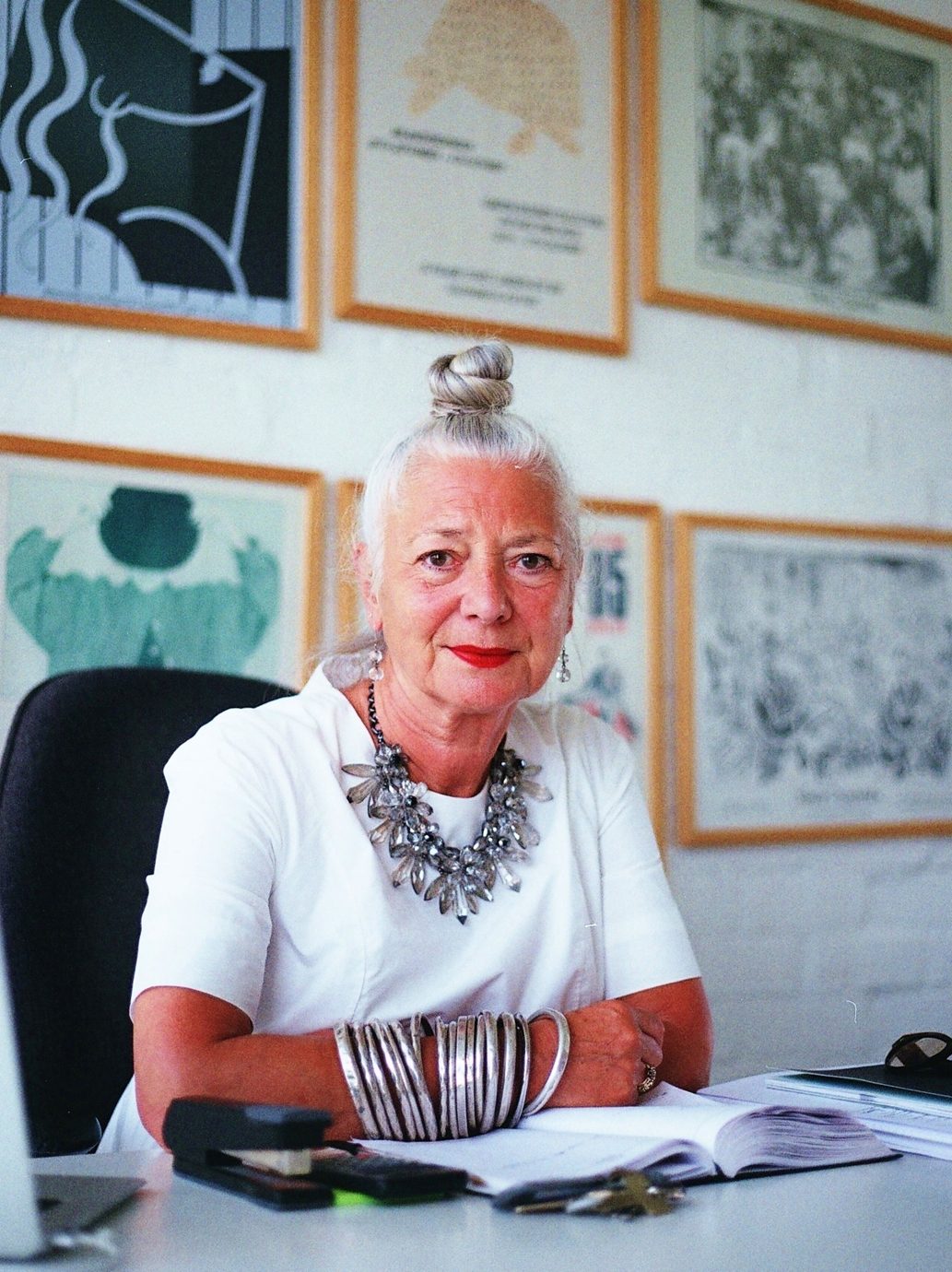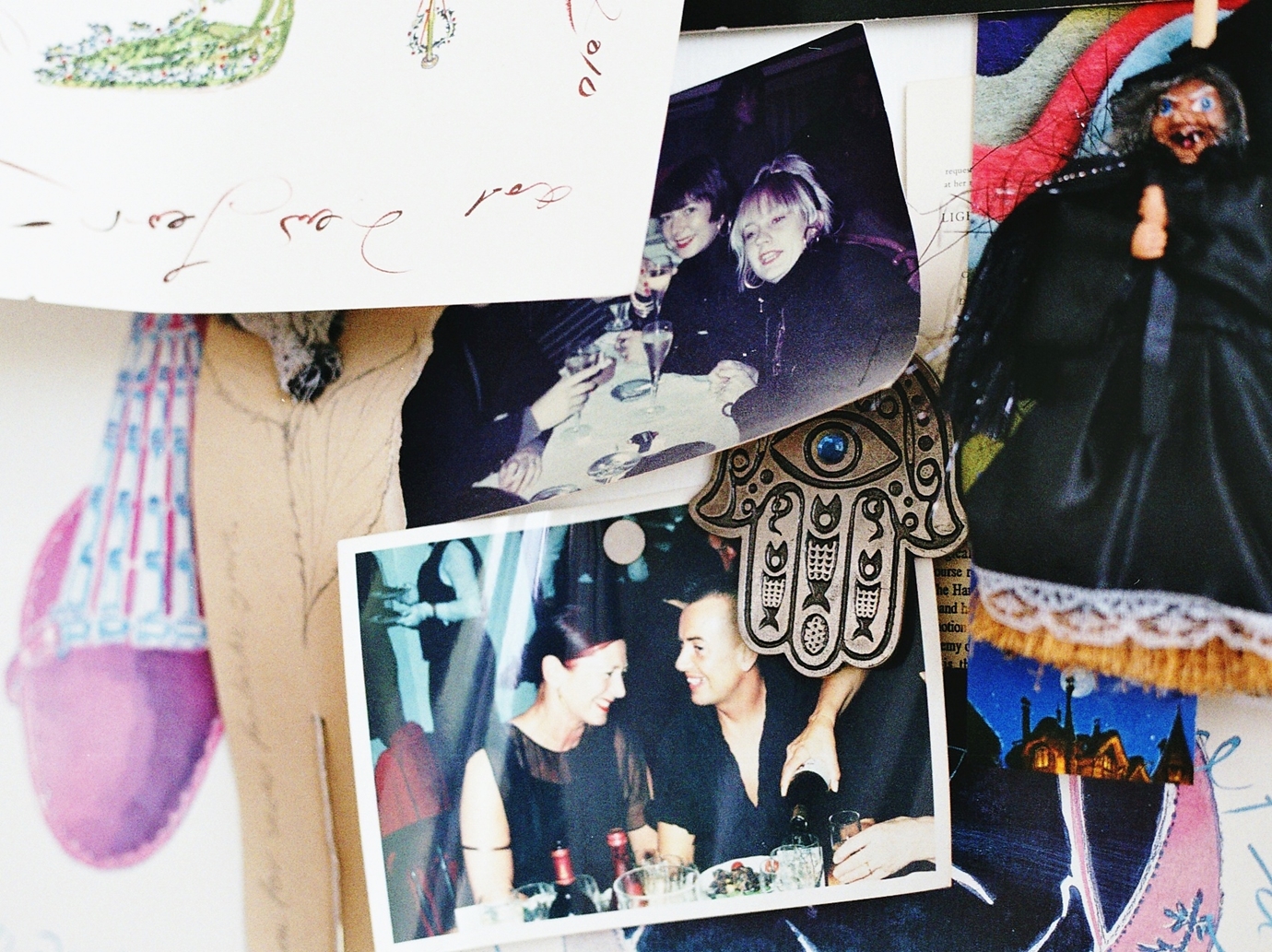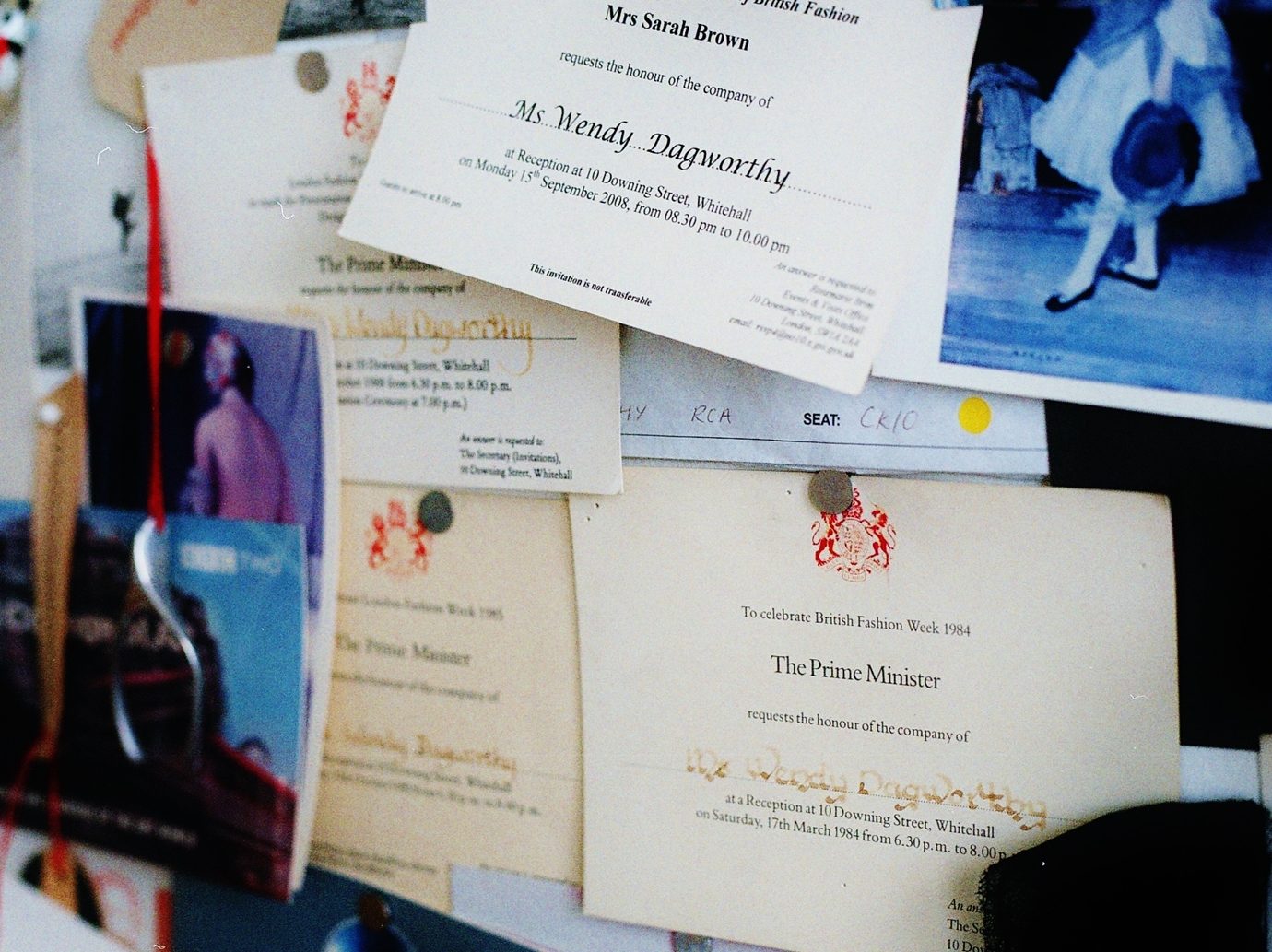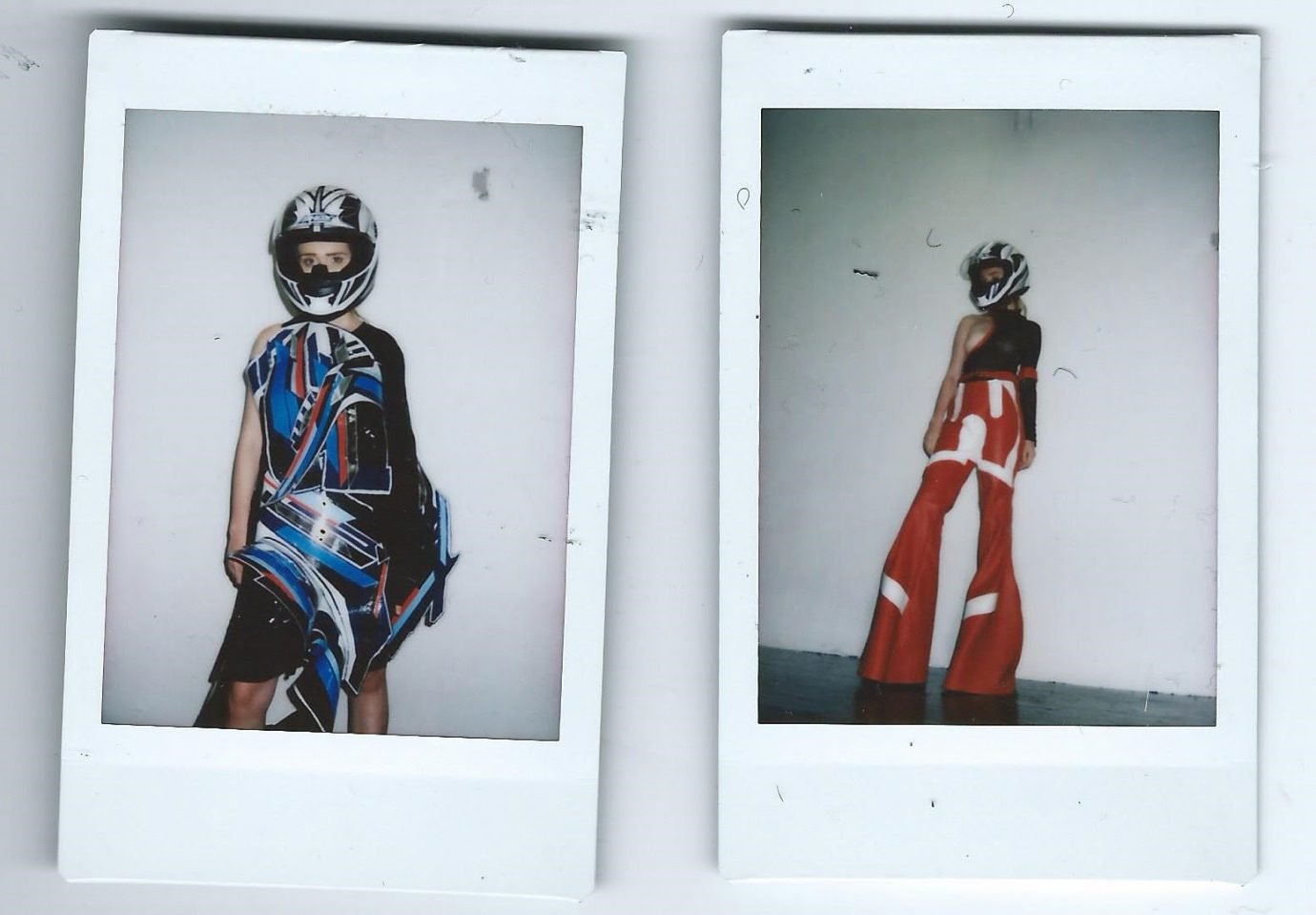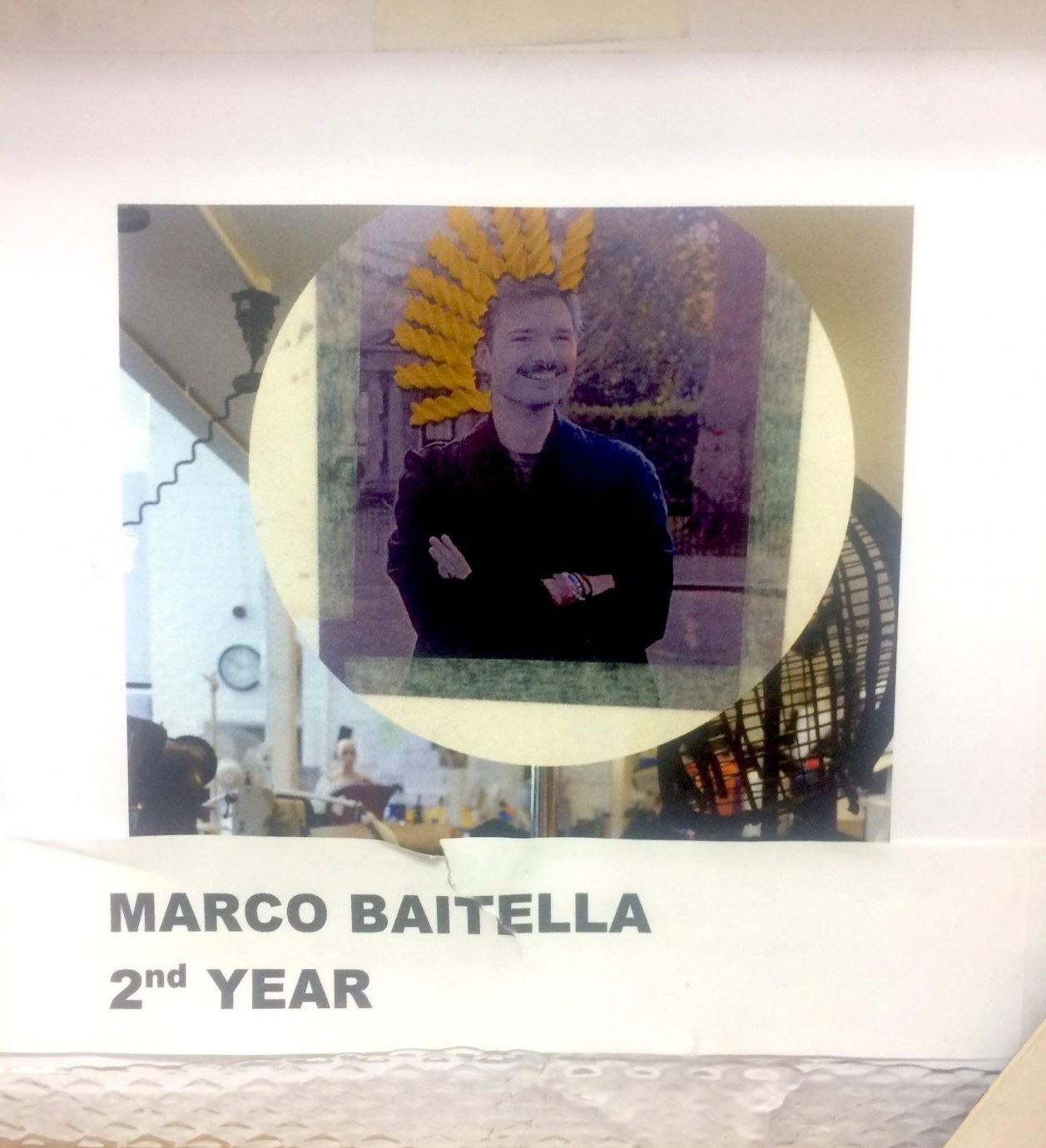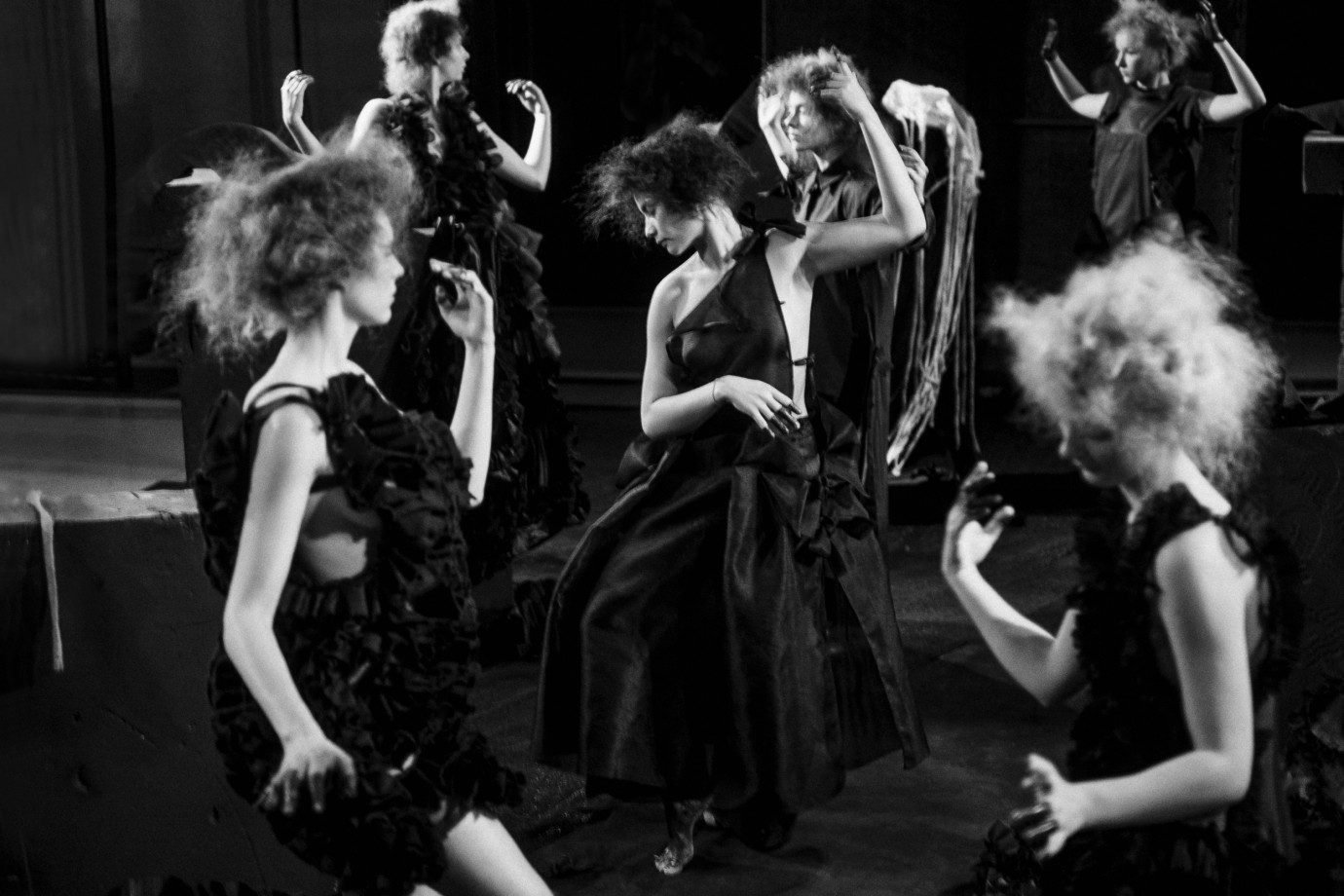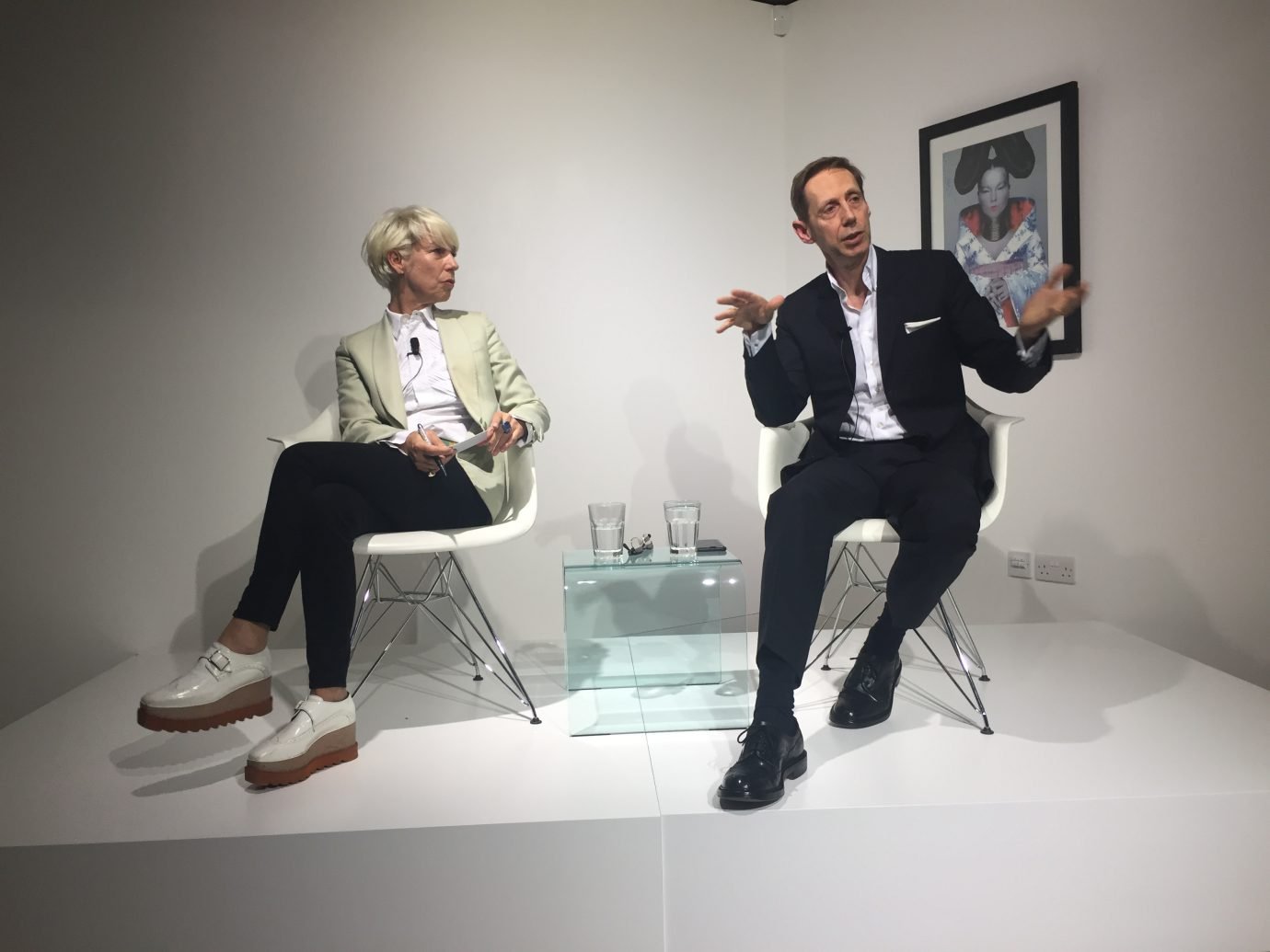Dagworthy, who has taught some of the most brilliant designers in the fashion industry (Alexander McQueen, Sarah Burton, Chalayan, Erdem -the list goes on) is modest, calm and extremely positive – a trait she’s undeniably refined, having taught at CSM and RCA for 25 years. She wears a white dress, her silver hair is tied up in her signature chignon and her metal bracelets that cover 1/2 of her right arm resound with every move she makes.
After graduating from Hornsey College of Art, Wendy started her own label, and designed stage clothes for Roxy Music, who she joined on a coach when they performed outside of London. The most outrageous costume she made for Bryan Ferry was “a toreador’s outfit, like a bull fighter’s costume”. She reminisces the bell boy outfit she made for the For Your Pleasure album, and pyjamas. “I did lots of pyjamas for him, when he had his tonsils out. I made him some pyjamas for when he was in hospital, with his initials on. That was a key thing of mine, I did lots of shirts with initials,” she says, with a slight raspy voice.
She remembers going to New York with a group of her contemporaries – let’s say the British predecessors of the Antwerp Six. One of their biggest markets was America. “There was Jasper Conran, John Galliano, Betty Jackson, Katharine Hamnett and me,” she says. “We rented a suite in a hotel and had someone organising appointments for us from right across America, because it was during New York Fashion Week.” They had a party at ‘Little Mel’s’, which was a groovy club at the time in New York, and Katherine and Wendy went on Good Morning America.
They all decided to join forces, for London was very disjointed at the time. Although there were the London Designer Collections, The Clothes Show and The Design Studio, it was very fragmented, with lots of different groups of designers, alongside those working alone. There were no platforms for labels to actually sell. After having thrown a few buyer/press events in hotel suites and ballrooms in The Ritz and Montcalm Hotel, they decided to go under one venue at Olympia, and have a tent down there for the shows, which is ‘sort of when it became London Fashion Week.’ “It was good but you know, we just played it by ear really, did what you thought you should be doing. There was no set way of doing things. It was quite exciting.”
She designed for her own label for sixteen years, until the ’89 recession kicked in and she had to close her business. At that time, the Saint Martins’ course director had just left, and, having been an external examiner at the college, she was offered a promotion. “I’d closed my line that November, so they asked me if I’d be willing to take over, and many years later I was still there.” Teaching has always come naturally for Wendy, as she’d always taught when she had her own company. Though not on a regular basis, she’d go to different colleges all over the country and “maybe set a project, come back in the middle and do some tutorials, and then go back and critique it.”
“I’ve been an external examiner for probably every college in the country – and a few international ones – so I’ve always done it. Until I started doing it full time, which sort of came naturally.”

